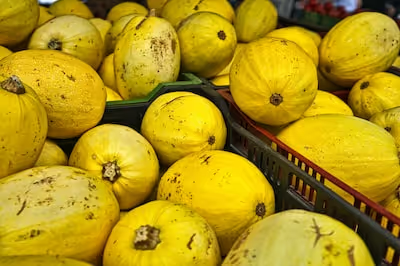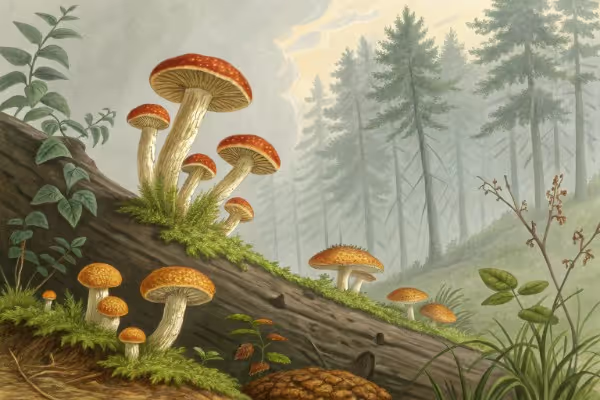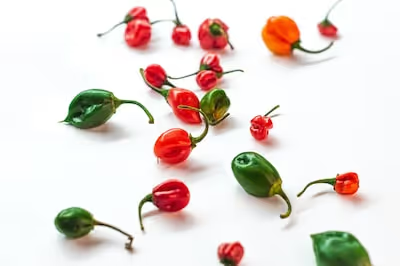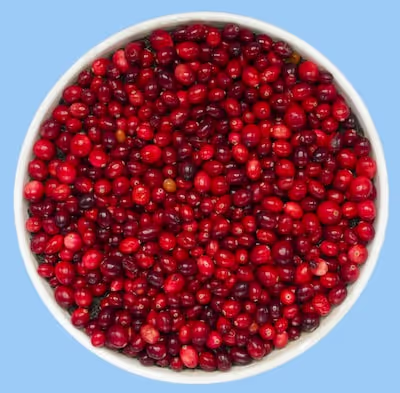Growing Chamomile: How to Cultivate Healthy, Abundant Blooms

Growing Chamomile
Growing chamomile rewards gardeners with aromatic blooms, calming brews, and pollinator-friendly plants. Start growing chamomile easily from seed in sunny spots with well-draining soil, or transplant seedlings directly into your garden. With regular watering and minimal fuss, you'll soon harvest flowers for teas, infusions, and natural remedies—your garden’s fragrant invitation to relax. Curious? Let's get planting.
Cheatsheet: Chamomile Blooming Made Simple
🌞 Sun & Soil
- Full sun (6+ hrs/day)
- Well-drained, sandy soil (pH 5.6–7.5)
- No fertilizer; too much slows blooms
🌱 Sowing & Spacing
- Start seeds indoors 6 weeks before last frost, or direct sow after last frost (soil 60°F/15°C+)
- Press seeds onto soil—don’t cover
- Thin to 8–12 in (20–30 cm) apart
💧 Watering
- Water when top 1 in (2.5 cm) soil dries
- Avoid overwatering—roots rot easily
✂️ Harvesting & Yield
- Snip blooms early morning at peak (petals flat/outstretched)
- Harvest every few days for continuous flowering
- 1 plant yields 50–100 flower heads/season
🪴 Tools and Products You'll Need
- Chamomile seeds (German for annual; Roman for perennial)
- Seed tray or starter pots
- All-purpose potting mix
- Fine mist sprayer
- Sharp scissors or snips
- Drying rack or mesh tray
🌿 Health, Nutrition & Self-Sufficiency
- Rich in antioxidants; supports relaxation, digestion
- Homemade tea: 1–2 tsp dried blooms/cup
- Save seeds for next season
⚡ Steps to Grow Chamomile
- Fill pots with damp potting mix. Press seeds on surface.
- Mist lightly. Cover with plastic lid until sprouting (5–14 days).
- Move seedlings to light. Thin when first true leaves form.
- Transplant outside after frost, spacing 8–12 in (20–30 cm).
- Water deeply but let soil dry between.
- Cut flowers when petals outstretch, dry flat for tea.
-
Growing Chamomile: How to Cultivate Healthy, Abundant Blooms
Know your plant: German vs. Roman
German chamomile Matricaria chamomilla is an annual that self-sows freely, throws heaps of daisy-like blooms, and tops out around 20 to 30 inches tall 50 to 75 cm.
Roman chamomile Chamaemelum nobile is a low, creeping perennial, hardy to roughly USDA zones 4 to 9, that makes a fragrant groundcover and smaller, fewer tea-grade blooms.
I grow German for tea yield and Roman for paths, lawn patches, and a scented mat around stepping stones.
Flavor varies too, with German tasting apple-honey and Roman leaning slightly bitter and herbaceous.
Site and soil that keep plants singing
Give chamomile full sun in cool summer regions, or morning sun with light afternoon shade where summers scorch. Six to eight hours of light sets the table for flowers.
Loose, well-drained loam does best, pH 6.0 to 7.5, with just a hint of fertility. Overfeed it and you get leaves, not blooms.
I prep beds with a thin sift of compost, then back off. This plant thrives on the lean side.
Clay soil? Add sharp sand and compost for drainage, or grow in containers with a gritty mix.
Seed to seedling: my fast, clean method
Start seeds indoors 4 to 6 weeks before last frost, or direct sow once soil is workable and 50 to 60 F 10 to 16 C. Both routes work.
Chamomile is positively photoblastic, so press seeds onto the surface and do not bury. A dusting of vermiculite helps hold moisture without blocking light.
Ideal germination temps land at 60 to 70 F 15 to 21 C. I use a heat mat on low and pull it as soon as I see green.
Bottom water only. I once lost a whole flat to damping off from one careless overhead spray.
Transplanting and spacing
Set out seedlings after danger of frost, with firm rootballs and 2 to 3 true leaves. Harden off for a week.
Space German chamomile 8 to 12 inches 20 to 30 cm, rows 12 to 18 inches 30 to 45 cm. Roman can go 12 inches 30 cm on center to knit a living carpet.
Water and feeding habits that favor flowers
Keep soil evenly moist while establishing, then water deeply about 1 inch 25 mm weekly in dry spells. Shallow daily sips breed weak roots.
Skip high-nitrogen fertilizer. A light topdress of compost at planting, then nothing, gives me the most fragrant harvests.
Pinching, branching, and bloom surge
I pinch German chamomile once at 6 inches 15 cm to encourage branching. Yield spikes and stems stay manageable.
Plants that are pinched and grown lean give tighter, more abundant flower heads with richer aroma.
Harvest timing for peak oil and flavor
Pick when ray petals sit flat or just begin to droop downward. Wait too long and they turn fluffy with seed instead of oil.
Harvest in late morning after dew dries, on a sunny day. Aromatics peak when the plant is fully awake.
I use a small berry comb or my fingertips, rolling the buttons into a basket. A square meter can give several hundred heads per pick during peak flush.
Plan on multiple passes per week for 4 to 6 weeks. Plants reward consistency with more flowers.
Drying and storage
Spread single layer on mesh racks in a dark, airy place at about 95 F 35 C. High heat cooks the oils.
Dry until centers snap clean, 2 to 4 days here in a low-humidity room. Store in glass, out of light, up to a year.
My reliable weekly schedule
- Week 1 to 2: Surface-sow indoors, 60 to 70 F 15 to 21 C, bottom water.
- Week 3 to 4: Thin to strongest seedlings, brush fingers lightly over tops to toughen stems.
- Week 5: Harden off outside, wind-sheltered spot.
- Week 6: Transplant post-frost, water in, mulch lightly with shredded leaves.
- Week 10 onward: Pinch once, then harvest three times per week in peak bloom.
Container culture that actually works
Use at least 2 to 3 gallon 7.5 to 11 L pots for German types, shallow wide bowls for Roman. Terracotta helps prevent waterlogging.
Fill with a gritty mix 60 percent high-quality potting substrate, 30 percent perlite, 10 percent compost. Fertilize lightly once with a balanced organic product at transplant.
Pests, diseases, and clean fixes
Aphids, thrips, and spider mites visit stressed plants first. A strong water blast and insecticidal soap take care of most issues.
Damping off and Botrytis show up in cramped, humid trays. Improve airflow, thin early, and water at the base.
Powdery mildew flares in overcrowded beds late season. I prune for air and harvest harder, which keeps plants open and productive.
Companions and design
Chamomile draws hoverflies and tiny parasitic wasps, which hunt aphids on brassicas and lettuce. I tuck it along the sunny edge of those beds.
It pairs well with carrots, onions, and calendula for a pollinator lane that earns its keep.
Safety and common-sense use
Anyone sensitive to ragweed, chrysanthemums, or marigolds should handle with care. Test a small amount first.
If you take anticoagulants or are pregnant, consult a clinician before drinking strong infusions. Better to be cautious with herbs you plan to consume.
"Chamomile may cause allergic reactions in people who are allergic to ragweed and related plants." Source: National Center for Complementary and Integrative Health NCCIH.
Varieties worth your bed space
- Bodegold German high essential oil content, upright habit, heavy producer for tea.
- Zloty Lan German dependable in heat, big flower heads, easy to hand-harvest.
- Mandarina German compact, citrus-leaning aroma in my trials, good for pots.
- Treneague Roman non-flowering lawn type, dense mat for paths and crazy-fragrant turf.
- Flore Pleno Roman double blooms for ornamental edging, lighter tea yield.
Yield, cost, and gear: the honest math
From a 4 by 8 foot 1.2 by 2.4 m bed of German chamomile, I average 4 to 10 ounces 110 to 280 g dried per season, with steady picking. Good sun and lean soil push it higher.
Packets of seed run a few dollars, starter plants a bit more per pot, while quality dried flowers retail at roughly 30 to 60 USD per pound 66 to 132 USD per kg. Growing your own pays back quickly if you drink it weekly.
- Must-haves: fine sieve or mesh rack, shallow harvest baskets, pruning snips, and a cool dark cabinet for storage.
- Nice-to-haves: low-temp dehydrator that holds 95 F 35 C, and a small berry comb for speed picking.
Fertilizer and soil tests, simplified
Send a soil test in spring and aim for moderate phosphorus and potassium with low nitrogen. If organic matter sits at 3 to 5 percent, you’re set.
Too much nitrogen dilutes aroma compounds like bisabolol and apigenin. I’ve tasted the difference side-by-side.
Self-seeding and control
German chamomile drops seed generously, and I let a corner of the bed run wild for next year’s volunteers. If it wanders, mulch thick after final harvest and pull strays early.
Roman spreads by runners, so slice and lift edges once a year to hold the line. Spare clumps make free plants.
Tea quality, from garden to cup
Keep petals clean by avoiding soil splash, which means mulch and low, targeted watering. Harvest dry, never in rain.
Blend with lemon balm, mint, or calendula petals for a layered cup. I jar single-origin batches by bed and date, then mix to taste through winter.
Field notes and odd truths
Bees swarm the patch on hot afternoons and my entire herb lane hums like a tiny city. That traffic correlates with my best-tasting harvests.
On nights before a storm, I’ve noticed blooms open wider by morning, which makes picking fast but drying slower. I adjust batch size accordingly.
Quick diagnostics: what went wrong
- All stems, few flowers: soil too rich or too much nitrogen, ease off the feed and pinch once.
- Seedlings collapsing: damping off, improve airflow and water from below.
- Bitter tea beyond pleasant: overmature harvest, pick earlier stage and dry cooler.
- Plants topple: too little light or crowding, widen spacing and stake row edges.
- White film on leaves: powdery mildew, thin canopy and harvest more aggressively.
Season stretch and overwintering
German chamomile keeps blooming into light frosts, especially if you keep cutting. Cover with row fabric at 28 F -2 C to save a final flush.
Roman stays evergreen in mild winters, then surges in spring. I mow it high after bloom to refresh the mat.
Growing Chamomile alternatives and complements
- Calendula easy, sturdy orange petals for tea and salves, grows in similar lean soils.
- Lemon balm quick perennial citrus-mint note, partial shade tolerant.
- Feverfew stronger, medicinal daisy with a different bite, attracts similar beneficials.
- Catnip soothing tea accent, dries fast, pairs well with chamomile for bedtime blends.
Evidence and trusted references I lean on
Royal Horticultural Society RHS for culture basics on sunny, well-drained sites and variety traits. Practical and aligned with field results.
University extensions from Wisconsin, North Carolina, and Oregon for sowing temps, spacing, and disease management. Their guidance matches what I’ve seen in production beds.
NCCIH for safety on allergies and drug interactions, which every tea grower should review before sharing blends.
Pharmacognosy texts and monographs on chamomile oil chemistry bisabolol, chamazulene, apigenin that track aroma to growing conditions and harvest stage.
German chamomile behaves like a sunny-day factory: more light, leaner soil, and timely picking equal denser oils and far better tea. It’s kitchen economics backed by plant physiology.
Anecdote from a scorching July
One brutally hot week 98 F 37 C, my unshaded bed stalled while the partially shaded strip kept blooming. Since then I plant a trial row with 2 hours of afternoon shade in hot-summer years.
That little tweak doubled usable harvests during heat spikes, and the tea smelled like apples and hay instead of boiled lettuce.
Frequently Asked Questions About Growing Chamomile
What type of soil suits chamomile best?
Chamomile thrives in well-drained, sandy loam soil with a neutral pH of around 6.0 to 7.5. Prepare soil by mixing in organic compost to ensure proper drainage and fertility.
How much sunlight does chamomile require daily?
Chamomile plants prefer receiving at least 6 hours of direct sunlight daily. Although they tolerate partial shade, full sun encourages more abundant flower production.
How frequently should chamomile be watered?
Ensure the soil remains lightly moist but never waterlogged. Water once weekly during dry periods, providing approximately 1 inch (2.5 cm) of water. Adjust frequency according to rainfall and temperature.
At what temperatures is chamomile cultivation most successful?
Chamomile grows best in moderate climates, ideally at temperatures between 60–68°F (16–20°C). Plants can withstand mild frost but may struggle in very hot or freezing conditions.
When and how should chamomile flowers be harvested?
Harvest chamomile flowers when petals fully open, typically during early morning hours. Gently pinch or snip flower heads off their stems; drying immediately preserves their beneficial oils and aromatic qualities.
Can chamomile be grown effectively in containers?
Absolutely. Select a container at least 12 inches (30 cm) deep with suitable drainage holes. Using a light potting mix and placing containers in a sunny spot ensures healthy growth.
Are there any plants chamomile grows well alongside?
Chamomile pairs beneficially with vegetables and herbs like cabbage, onions, cucumbers, basil, and rosemary. Its aromatic presence naturally deters pests and attracts pollinators.
Growing Chamomile rewards a gardener with more than just delicate flowers—it offers calm evenings, fragrant teas, and a touch of old-world charm. With well-drained soil, full sun, and an easy hand at watering, you’ll have healthy, abundant blooms that practically look after themselves. Pay attention to deadheading and gentle harvesting to keep those flowers coming. Give it space and keep weeds in check—chamomile is tough, but a little care goes a long way. Cultivating this herb is straightforward, much like growing thyme; both thrive on a laid-back approach and a bit of sun. With chamomile in your garden, you’re never far from a fresh cup or a reason to slow down.
The Homesteader's Approach: Chamomile for Health and Self-Sufficiency
Homegrown Herbal Remedies
Chamomile offers anti-inflammatory and calming properties for teas, salves, and tinctures.
- Chamomile Tea: Harvest flower heads for digestive relief, anxiety management, and improved sleep quality.
- Skin Soothing Salve: Combine dried chamomile flowers with beeswax and coconut oil to relieve minor skin irritations.
- Natural Hair Lightener: Prepare strong chamomile tea rinse to naturally lighten or brighten blonde hair.
Sustainable Growing Practices
- Self-Seeding Advantage: Allow plants to set seed yearly; chamomile reliably self-sows for continual harvesting.
- Chamomile Companion Planting: Plant alongside cabbage, onions, and cucumbers to repel common pests like aphids and cabbage moths.
- Pollinator Attraction: Flowers attract beneficial insects including bees, ladybugs, and hoverflies, boosting crop production naturally.
Chamomile Storage Essentials
- Dry for Year-round Use: Air-dry blossoms upside-down in dark, ventilated spaces to preserve flavor and medicinal potency.
- Long-Term Preservation: Store thoroughly dried blossoms in airtight containers; keeps potent up to one year.
Chamomile by the Numbers
- Optimal drying temperature: between 95°F (35°C) and 115°F (46°C).
- Average annual yield per mature plant: ½ oz (14g)–1 oz (28g) dried blossoms.
- Tea steeping guideline: 2 teaspoons dried flowers per 8 oz (240 ml) hot water, steeped 5–10 minutes.
Find out which plants will thrive in your garden!
Answer a few fun questions and get custom plant recommendations perfect for your space. Let’s grow something amazing together!

start your season





